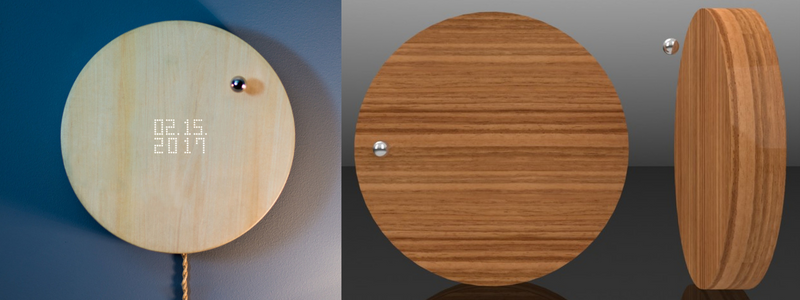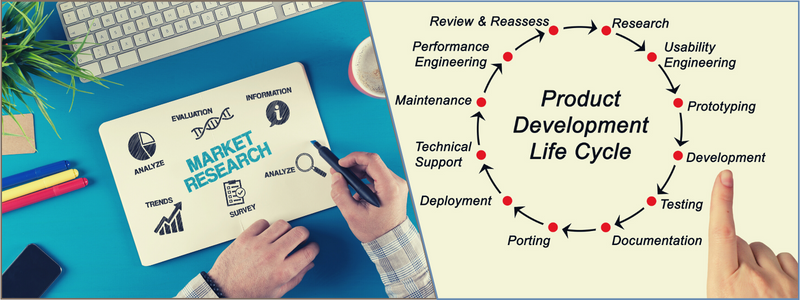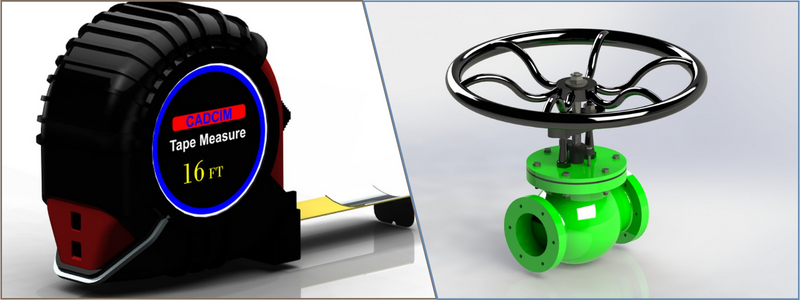Today’s post will discuss why market research is important for product development before launching a new product at companies. No product design will ever come to life without market research. Market research is critical in product development and is among the most pivotal success factors when developing a new product. Many organizations today depend on developing new products to stay competitive and ahead of their industry.
While it is often lengthy and somewhat challenging, new products allow organizations to grow and expand their market reach. Since many products never even make it to the store shelves, market research has become more imperative than ever. Organizations need to make informed decisions based on customer insights and actual market opportunities to ensure that the cost and time invested in developing a new product don’t go down the drain.
RELATED: How much does it cost to produce a product? Bringing your invention to market
With the help of market research, project teams can obtain pertinent insights that will guide every step of the product design and development process. Before hiring an experienced product and concept design expert to help design and develop your product, you must do your homework first. This blog post will discuss what market research is all about, why you need to do it, the different types of market research, common methods, and how to conduct your research.
What is market research?
Market research for product development can focus on several areas. You can research market viability, the features your target users are looking for, the demand for the product you are considering, and the best way to communicate, market, position, and price your product to your target group. You have to consider your competitors, key trends, and market developments. Market research for developing new products is about pinpointing opportunities and determining whether they will bring your new product idea to life. If it is worth doing so, you also need to identify how to do it in the best possible way.
RELATED: Three product marketing tips for inventors
There is more to market research than just knowing what your competition is doing and whether or not your target market will be willing to spend their money on you. You might also learn about market trends to discover how to market your product. Market research can also come in handy in fine-tuning your product development and its relevant elements. Depending on how your target market is developing, know the type of message and price that will capture their attention.
You also need to know the marketing tactics that will work and the channels that will likely dominate your market. Consumer research also involves understanding every aspect of your market. You can think of this as being similar to a big puzzle. After every piece is put in place, you can present your solid research or plan to your team and investors so they can better understand why it is worth working on your product development idea.
RELATED: Figuring out the financials: will your invention be profitable?

Why conduct market research for product development?
Market research for a new product development strategy can help reduce risks and prepare you to launch your product successfully. You will become familiar with your audience and market in such a way that will help you develop a flawless product concept. At the same time, you will also discover the best approach to marketing and messaging about it, which will resonate with your target audience. The market research process ensures that your decisions will be based only on facts and not just hunches and ideas, even if you excel in guessing games.
Before you spend any money and time on a 3D product modeling company for your product idea, it is essential to know the possibility of it being successful. It will also help you plan how much money and time you will need. Stakeholders and investors are also interested in seeing market research if you are introducing a new product idea. These people want some sense of security in knowing that the product will sell in the first place. While market research is not a crystal ball or a deck of tarot cards that can predict the future, once done right, it will give you a much clearer picture of how the market will welcome your new product concept.
RELATED: 5 Fascinating things inventors need to know: taking products to the market
Importance of market research for product development
Market research is essential to verify if your idea for a new product will be worth the effort and work; you can also use it to optimize existing products by monitoring how your competitors change their products. You can also check online reviews on similar products and learn what specific features customers ask for. This is also considered a form of market research. It is also applicable if you want to add new products to an existing line to complement the current products or if you wish to embark on an entirely new adventure with your revolutionary product idea.
Market research for developing a product, whether existing or new, focuses on listening to everything in the market. Be sure to step outside your organization, look for people who will spend their money on your products, and ask them if there is something you can do to make them happier. You can also try to identify the trends you can jump onto right now and become a leader in the near future. The product development process isn’t something you should only conduct in-house with your on-site developers. An experienced 3D product rendering company can assist you in designing and developing an innovative product that consumers will love.
RELATED: 6 Reasons to choose a niche market for your new product idea
When this happens, it is easy to get tunnel vision and develop a product that focuses more on what you want and can deliver and less on what your customers want. When done right, market research can force you to step outside the confines of that bubble of just looking at how you can make your product faster, stronger, and shinier. At the same time, it also helps you determine how to find your product in a good place in the market.
The product development process is also about coming up with a sales and marketing strategy; it is also about having a positive customer experience with your product. An accomplished 3D printing design studio can help you produce the perfect 3D model for your product. The only thing you need to do here is to go and talk to your customers. Market research will also help you identify what the marketing mix must look like because, once again, new product development is never about the product alone.
RELATED: 10 Tips for good product design
Top Reasons to Conduct Market Research for a New Product
There are many good reasons why market research is imperative for new products, including the following:
1. Gather important information before investing
Whether you are a first-time inventor or not, developing a new product is costly. Market research is crucial if measures, a game plan, and a budget are established to guarantee ROI or return on investment.
Market research typically involves answering several questions, including the following:
- How long will it take to retrieve the invested money in the project?
- How many products will likely be sold every year?
- How much is the price of the product compared to that of competitors?
- How much are the anticipated profit margin and total cost?
- How much will customers pay for the product?
- How much is the project’s total cost, including the 3D product design services and development processes?
RELATED: How to succeed as an inventor: what does an inventor do?

2. Increase awareness of your competitors
Competition doesn’t only serve as the basis for customer protection because it is also a motivation to progress. There are three kinds of competitors that your invention will face. The first kind is direct competitors, who sell the exact product you offer to consumers. The second kind is indirect competitors, which don’t sell the same product but still compete alongside your market offering.
An excellent example is an indirect competition between gym equipment and a wellness clinic. The last one is an emerging competitor, and these competitors often show up sometime in the future. Continuing with the gym example, a wearable piece of fitness technology or a virtual gym can become an emerging competitor. When clients start to use the new technology, it eliminates the need for them to go to the gym or work with a personal trainer.
RELATED: The 10 most important design firm questions
3. Get to know your customers
Good inventors and innovators respond to the wants and needs of customers. For example, a clever inventor would research what customers wanted on their vehicles if mag wheels were not yet invented or sold. They could only proceed to source or create the product after getting this information, tailoring it to what their potential customers or market want rather than what they want. If research shows customers prefer titanium mag wheels with aluminum alloy, this should be precisely what the customer gets to guarantee an outstanding client experience and a responsive market.
4. Become familiar with market trends
Market trends can refer to a style, pattern, or leaning toward the choice or preference of customers. These are analyzed using three-time frames. The secular trend relates to market activity over the long term, typically five to 25 years. These trends are usually in the technology sector, such as the phone industry. Primary directions are medium-term, lasting one year or more. Good examples of these are trends in fashion and during the holiday seasons. Finally, short-term trends only last for a few weeks or months and often entail social media trends and current events. Being familiar with these trends and identifying how long trends last is vital for developing an appropriate product and launching it within a suitable timeframe.
RELATED: Low-cost product marketing strategies that work
Different types of market research
At this point, you know why market research is essential before launching a new product design. But what types of market research can you use? Product makers and inventors often lose themselves in the plethora of tools available that give them data. But what type of data is available? Is it relevant to you in any way? Knowing and understanding where information comes from and whether it is complete is imperative. How will you supplement it with more research to get the complete picture? The following are the different types of market research you can and should combine and make them work to your advantage.
1. Primary market research
Primary market research involves collecting raw data directly from your target market or customers. You can use data that you order from activities such as focus groups and surveys without using any third-party’s trend reports. This is critical for your product development research since you cannot base your strategy and decisions solely on other people’s findings for different target groups and products. Anything you collect directly from your market is considered primary data, whether from product research, interviews, surveys, or focus groups.
RELATED: From idea to reality: turning your invention into a product

2. Qualitative market research
To give context to numbers, you need qualitative research. Product X has already captured the attention of 500 people, but what’s the real reason behind this? What product were they using before, and what motivated them to switch? Is it because the price changed? Was it because of something shown in the news? Could it have been the result of recommendations from friends? It is almost impossible to collect qualitative data for all quantitative data measured, so it is best to get this qualitative data from the hyper-relevant area of your target group.
It wouldn’t help to send surveys to a particular section of your target audience to gather quantitative data only to ask for an explanation of these numbers from another group. Qualitative data usually comes from focus groups, which you can draw from the people you survey. You can also interview existing customers that fit into the profile you are studying, as it will help you envision a real-life image of consumers’ problems and needs. The ideal person to ask is someone who fits your perfect buyer’s persona.
RELATED: 6 Questions you should ask yourself about your invention
Why is qualitative market research crucial for the product development process? It helps you get a better understanding of your target market’s needs. You conduct research that steers the generation of your product idea in the right direction, guided by direct consumer feedback and insights. Of course, you can’t approach your target consumers during the initial phases of the process and ask them to design a product on your behalf. You will acquire the essential information you need through online surveys and quantitative methods to ask your focus group more specific questions.
3. Quantitative market research
Don’t fall for “quality over quantity” at this stage. If your goal is to make money, quantity matters, and it matters a lot. Quantitative research focuses on things that can be measured. How many people have shown interest in your product? How much are they willing to spend on your product on average? Are the numbers growing steadily, or would customers rather pay less? If it is the latter, is the group still increasing in size? It is also possible to gather information based on how satisfied people are with a product. However, this type of information doesn’t convey a motive, which is why you still need qualitative research.
RELATED: The product development process explained in 3 stages
4. Secondary market research
You can use existing data when conducting the secondary research. Just because the information isn’t brand new doesn’t mean it lacks valuable insights. You must gather specific data related to your product and connect it to your new design. You can also conduct secondary research to determine business risks, for example, by checking market developments. One valuable form of secondary research is competitor research. Competitor research gives you an accurate understanding of the options available to your potential customers. This is always a great starting point for any strategy for new product development.
Common research methods for product development
Primary and secondary are the basic classifications of market research. Primary or field research is where you directly acquire the data you need in the “field.” Meanwhile, secondary or desk research involves looking for existing data you can apply to your current project. Based on your budget and the type of data you are hunting for, you can choose several different techniques when hiring a 3D photorealistic expert to design your new product. The following are five of the most frequently used research methods relating to product development:
Field trials and experiments
Field trials and experiments involve scientific testing where it is possible to prove specific hypotheses and variables. This form of research is always naturally quantitative.
RELATED: How product design companies help entrepreneurs succeed with new inventions
Focus groups
A moderator uses a scripted series of questions to lead a discussion among a group of people. The session often lasts one to two hours and requires a minimum of three groups to achieve balanced results.
Observation
This technique draws a more precise image of customers’ shopping patterns and usage habits while you observe them in action by videotaping them in shops, at home, or at work. This can help you reach conclusions about the way they use a product. This method’s main advantage is measuring actual behavior rather than user-reported behavior alone.
Actual behavior is more reliable because users often report differently on surveys from their real-life behavior. Approaches include eye tracking using heat maps, usability testing using a prototype device, and contextual inquiry by talking to users while working in their natural environments to identify pain points.
RELATED: Your product packaging design can make your brand into an icon

Personal interviews
A personal interview includes open-ended, unstructured questions. These interviews are recorded and often last for about one hour. This method can yield valuable insights into users’ attitudes, unraveling their pain points and understanding psychological motivations simultaneously. It is an excellent tool when it comes to new product development. Possible downsides are that results are subjective and often not statistically reliable because they don’t represent a substantial chunk of the population.
Surveys
You can conduct surveys in person, online, via phone, or by email with straightforward and concise questionnaires. The larger your sample, the more reliable your results will be. What makes surveys different from focus groups lies in the information you hope to get from them. For example, a satisfaction survey may reveal that one part of the product is a tremendous matter. Meanwhile, the focus group will delve deeper to discover the underlying problem with the part.
RELATED: 101 Inventions that changed the world in the last 100 years
How to Conduct Market Research for New Product Design
You can never skip several aspects of market research if your main goal is to use your results for your product development strategy.
First step: begin with exploratory research
Exploratory research is about identifying what you want to research. It is normal not to know immediately what your goal for the research is or how you will achieve it; this is where exploratory research enters the picture. The process starts with gathering secondary data on different types or aspects of your design. Identify stand-out stuff, developments you haven’t considered before, and things you wish to learn more about. Using this information, you can define what you find most relevant for you at this point. Identify your knowledge gaps and check how you will ensure you get all the relevant data you need to make sensible business decisions. It is not necessarily about acquiring all the information you can; you must keep it relevant and manageable. Determine the questions you cannot answer immediately and make them the main focus of your exploratory research.
RELATED: Should you get a patent for your invention?
Second step: define the objectives of your research
Once you have finished your exploratory research, it is time to pinpoint what you truly need to know to proceed with the product development process. Do you want to focus on customer needs? How will you get an edge over your competition? Will your market analysis concentrate on pricing and market demand? Is there a lot of ground to cover in usage habits and the physical product? It would be best if you had a clearer picture of what you will be researching in the first place. Ask yourself which actionable insights you need to rise in this market segment. Your objectives must be as concrete as possible so your answers are focused enough for you to use with confidence as the basis for your next step.
Third step: determine the scope of your research
Market research is, as expected, a means of cutting back on risk. However, launching a new product always involves risk, and there is no 100 percent assurance of what may happen until your product officially hits the market. This is why defining a scope around your research objectives is essential, and it will also help identify where you need your primary and secondary data.
RELATED: How to design for a fantastic user experience
Fourth step: choose your partners or tools for market research
Will you focus on business as usual or the new product while a research agency does all the legwork? Or would you rather keep the entire process in-house? If the latter, it will be your responsibility to decide on the tools you will use for your market research. At this point, you will have almost endless possibilities. There is a tool for each stage of research. However, it is essential to use means you can efficiently work with and gather all the data you need so you don’t have to glue everything together from several sources. Pick a pleasant and easy tool for you and your consumers, especially if you will talk to them directly.
Fifth step: proceed with concept testing
While the market is interesting, this research is still about developing your product idea. Is your design good enough to be launched in the market, or will you still need additional input to polish it? This is the time to bring in concept testing. Concept testing allows you to develop an MVP for your focus groups. You get to learn about their thoughts. What features do they love and miss? How much are they willing to pay for the product? Is the product easy to use? Once again, remember that you are not only developing a new product here. At the same time, you are also developing communication and marketing around it that requires thorough testing.
RELATED: Validating your idea: is there a market for your product?
How can Cad Crowd help?
Cad Crowd offers CAD design and product development services for entrepreneurs throughout the product design cycle. From patenting to 3D modeling design to manufacturing and 3D printing, we’ll connect you with the services you need to bring your invention from idea to product. Get a free estimate today.
